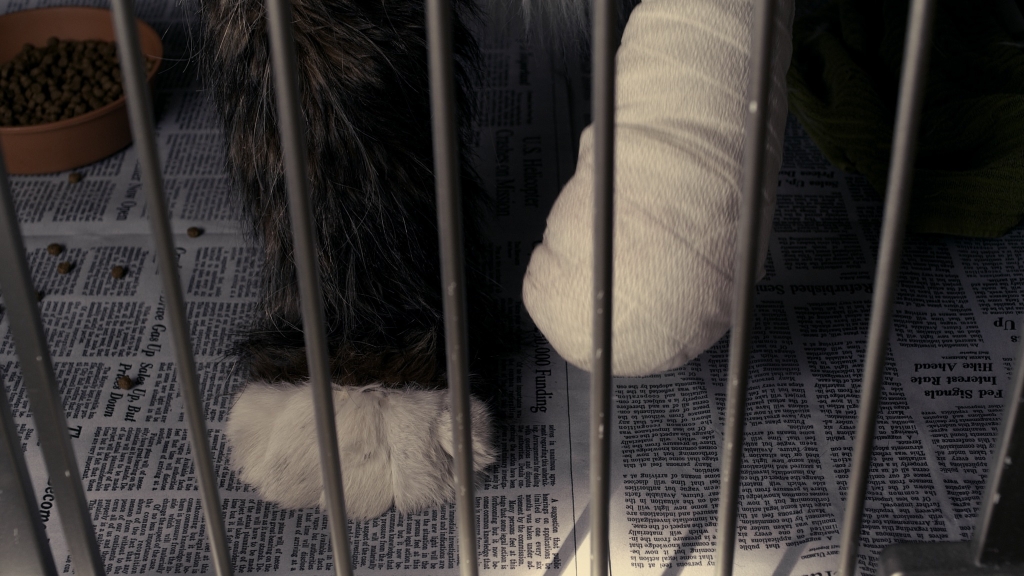
Figure 1.
The title of the film, The Future, is emblematic of the very thing the characters fear, what is the unknown. July certainly lets the cat out of the bag as she reveals her inner monologue through the narration of an anthropomorphic feline.
The cat plays a central role in the drama, as it begins with a couple from Los Angeles taking the injured animal to a shelter, later giving him the name Paw Paw and deciding to adopt him. The couple’s impulsive decision to foster the old cat together is, however, halted, as the vet informs them they will not be able to pick the cat up for 30 days. This act of commitment, to both the cat and to each other ‘represents their first tentative ferrari into the adult world of responsibility’, in caring for another being other than themselves. July illustrates a melancholic story about the desire to belong, as Paw Paw represents their fears of devotion to another being, and opportunity to break out of the malaise of their idle lives.
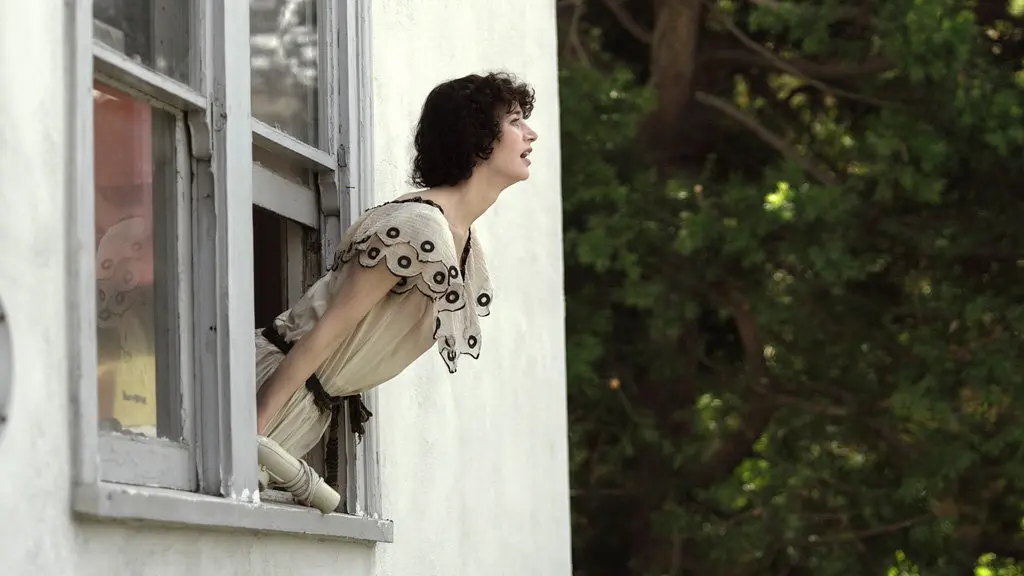
Figure 2. Sophie screaming outside a window 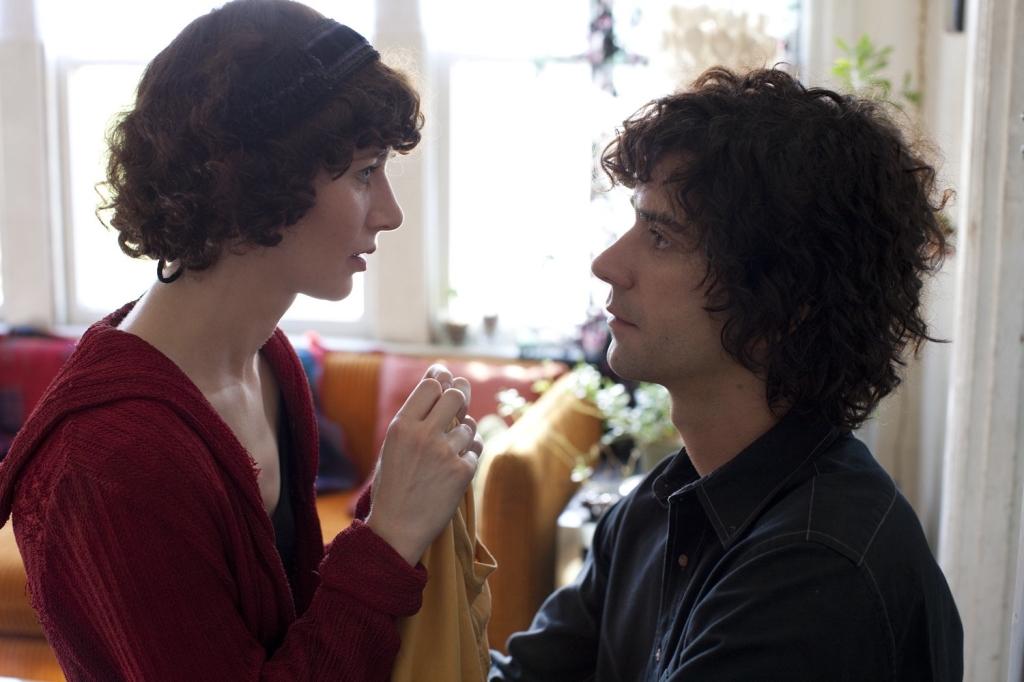
Figure 3. Sophie and Jason 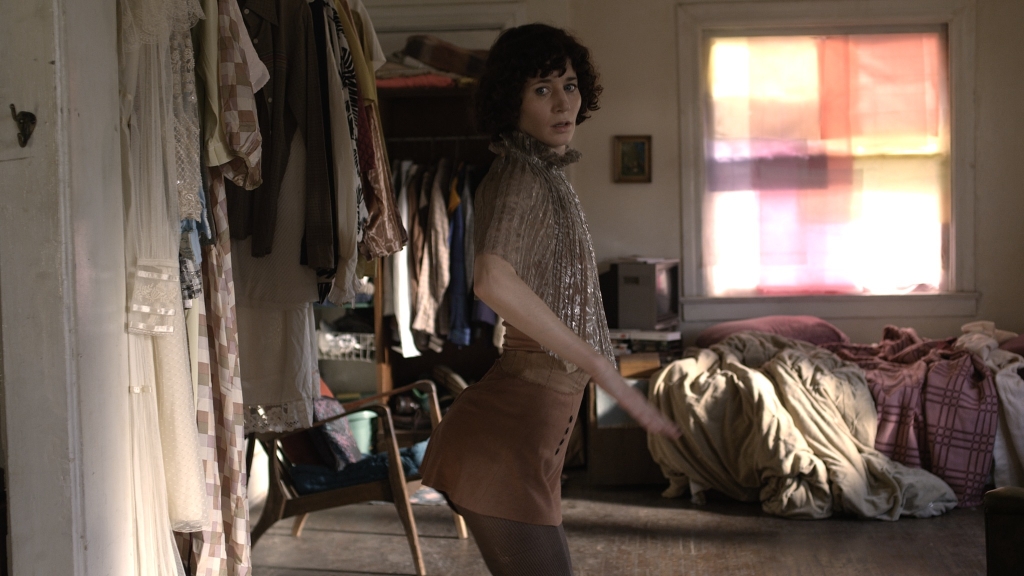
Figure 4. Sophie dancing
The beauty of independent filmmaking is that the filmmaker has the freedom to determine their content, and in turn connote deeper meanings about society. July does exactly this, as she creates original content that inspires thinking about modern day living in a digital world. As the couple are informed that the cat may live for 6 months or five years, Jason and Sophie consider what their life would look like in the future. The relationship the characters have with time is different to the cat, as in conversation, Sophie contemplates ‘We’ll be forty in five years’ and in response Jason sighs, ‘Uh. Forty is basically fifty and then after fifty, the rest is just… loose change’. The cat however questions, ‘How long was thirty days?’ which fundamentally engages the viewers in the capability of the feline’s awareness. Time perception is an essential element to human consciousness, and it is a factor that separates humans from non-humans. Although differently, animals do have a concept of time and can judge the passage. Most notably in The Future, July displays that, as time passed, the cat’s ‘nights were longer’ which infers imagery of solitude and an entrapment within the darkness that is detrimental to the feline’s hope that the couple would return.
How Long is Thirty Days?
Miranda July aligns herself with surrealistic techniques, which are found within the protagonists Jason and Sophie. The filmmaker herself uses surrealism as a form of exploration of her own mind, as she ‘critically reflects on her own artistic idealism and its rootedness in American myths of emotionally fulfilling social relationships fostered by progressive technology’. These surrealist techniques are represented in order to explore the psyches of each character, and July’s concern with time and space is projected onto her characters, as Jason acquires the ability to alter time. This desire for control infers an affinity with the transient nature of all beings, and that time is something that humans cannot interpret themselves.
The future is the part of life that humans are constantly in fear of, and within the film, this anticipation from the characters causes them to lose touch with their environment. In the first moment that Jason jokes about freezing time, it seems playful, yet as the motif of time unfolds into the depths of the movie it becomes increasingly morbid. As Jason succeeds in stopping time, July tells us that ‘I wanted not only to think about time and the future and death, and getting older, but also the way you can get stuck in time. The way you can get paralysed’. July allows an insight into the character’s torpid state as they endure the challenges and pressure of modern life. It is most notable in Sophie, as in the moment of desperation as she commits fidelity in the hope to reconnect with her soul, but what is absent is passion with the stranger. The sense of regret, for not living up to expectation, that the characters embody is essential to the development of their mental deterioration which marks the culmination of their existential crisis.
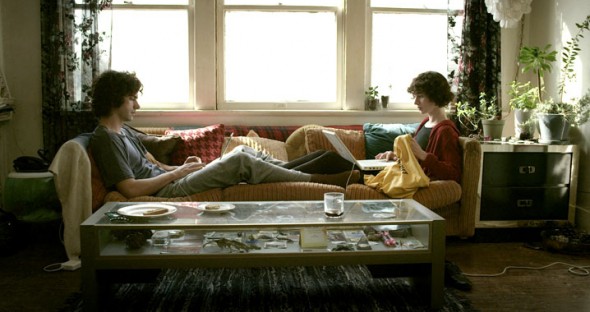
The narration of the cat is essentially surrealist in nature as he is exploring his psyche and innermost thoughts. This anthropomorphic technique engages the animal with the audience, as it is given an identity and a voice which invites an intricate insight into the cat’s personal thoughts and feelings about waiting to be collected by the couple. July uses this dramatic irony to display the relationship between the two humans and the cat, ‘they came back, and they petted me, and I accidentally made the sound that means, I am cat, which is belonging to you’. As the cat proceeds to pur, this gentle humour infers the human interpretation of the noise as an indication to satisfactory feeling from the animal, and an audible sign of contentment. Notably, humans project their own emotions onto animals that we encounter, which are sometimes exaggerated, and in this context it seems misinterpreted.
This reminds us of the tale of Jacques Derrida and his cat within his essay, The Animal That Therefore I Am, in which Derrida speaks to himself naked, face to face with his cat, finding himself uneasy under the animal’s gaze. The tale hints towards the concept that cats and all other animals that humans encounter, provoke thought about our own existence, and that we as humans have only socially constructed the relationship between nudity and humiliation. It is ‘in being regarded by his cat that Derrida is provoked to think through the alternity and multiplicity of animot’. Derrida coined this term ‘animot’ in relation to animality and how humans have created an opposition to this. The philosopher insists that humans reconsider the human relationship with nonhumans, and to give animals mutual respect and visibility. The cat’s internal monologue in the film allows an insight into how our actions affect animals, and they too are interpreting and understanding us as animals.
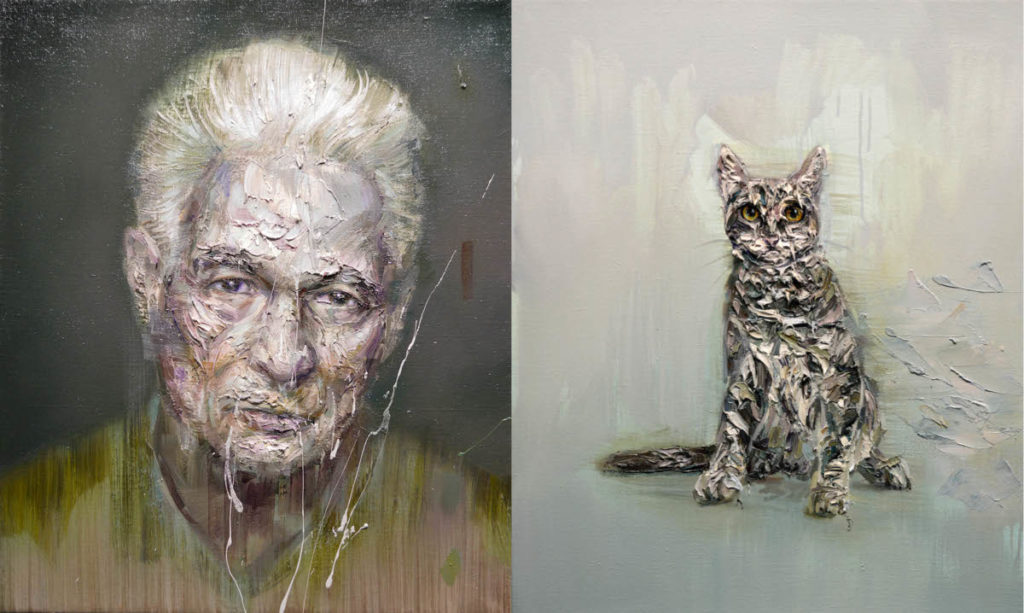
July introduces the notion of wildness is continuous throughout the film, first introduced by Sophie’s character, as she exclaims ‘I am wild’. Sophie’s engagement with an affair displays an act of recklessness, as she acts on impulsive desires, which could be argued as an animalistic attribute. This notion corresponds to some of the final words ‘I am alone, and always have been and always will be wild’, from Paw Paw, who recognises that he is dying without being undomesticated by the humans. The broken grammar that the cat demonstrates infantilisation of the character, and gives further insight into how humans treat animals with emotional immaturity, in the way that we speak to animals and in the way we imagine they would talk. It is also interesting to consider July’s conscious decision to illustrate an adoption of a cat, rather than say a child, or even a pregnancy that could provoke the same fears in the characters. This image of adoption may be a reflection of July’s own deep thoughts, which may relate to her own apprehensions about the prospect of the responsibility of having a child.
I am alone, and always have been and always will be wild
Moreover, an actor named Ella played the part of Paw Paw – yes the cat is an actor – in one of the scenes. The representation of animal actors in films can give a wider understanding of the human-animal relationship, and the part that animals play in human life, and conversely. Feminist Judith Butler infers that ‘the human and the inhuman are bound together, an inseparable dyad in which the human needs the inhuman to understand itself’, which provides an element of constructivism, in that reality is subjective to human consciousness. Thus, animal performances ‘are generally, and theoretically constructed as light entertainment, coloured by the fantasy of popular imagination’, which states more knowledge about the film director’s connection with the natural world than specific appreciation for the animal.
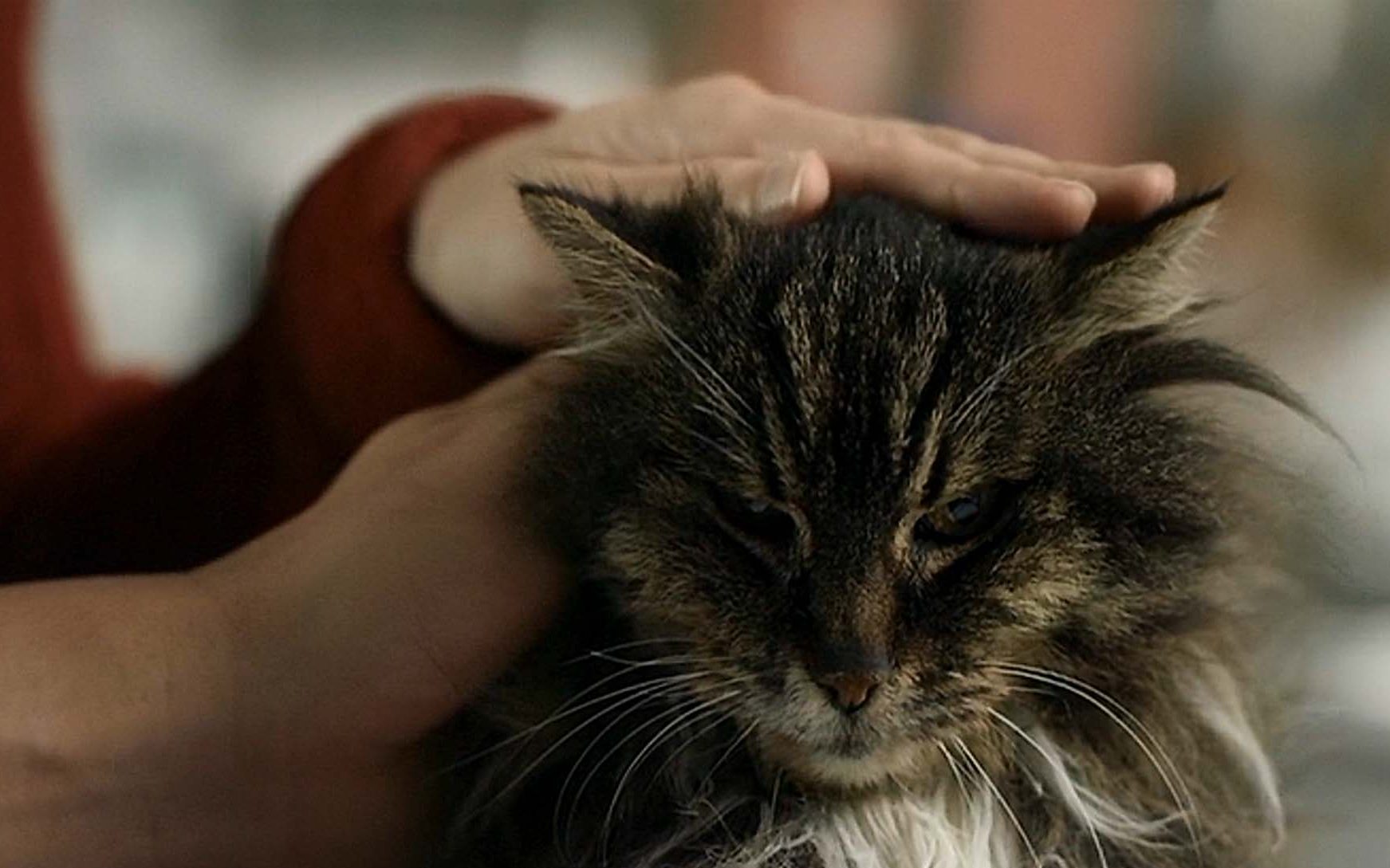
It can be argued that as humans, we rely on animals for entertainment just as we do each other. Scholars have interpreted that ‘the role played by animals throughout history, as well as in recent popular culture […] are heavily imbued with symbolism and values with which humans have invested animals’. A conversation with July she tells us that the depiction of Paw Paw, as the catalyst for fear of the future, was instigated by a ‘bizarre accident wherein our dog ran into the street, causing a car to swerve and hit a cat. My producer, Gina Kwon, was actually there when it happened. As we put the dead cat in a bag I remember saying something to her like “We must redeem this cat”. This anecdote from July is informative to a wider understanding of human redemption and how we believe that we can repurpose the life of animals, and give meaning to their lives. Within the film, the cat is never given a life outside of homelessness and hospitalisation, which for the audience evokes emotions of sympathy for the animal. The couple arrive at the vet the day after they were supposed to pick up Paw Paw, this unfortunate mishap with the dates causes the cat to be put down by the shelter. This infers a tragic ending for the film as the cat dies without belonging to a home, which can relate to human belief that cats should be domesticated in order to live a happy life.
https://aaronbeckum.com/MAKING-THE-FUTURE
For most of the film, Paw Paw is represented by only his front paws, one bandaged and a little white one. Puppeteering has been utilised within theatre for decades, and evidently has continued to be used in contemporary film in order to engage audiences in disseminating knowledge. The conscious choice from July to use pupeteering, instead of say CGI, here provides an insight into how humans constructively create non-human characters in order to evoke emotional development. This can also allow an insight into the independent genre, with low budgets and limited access to technological material, CGI may have been an expensive option and thus not applicable. Nonetheless, the use of puppetering may be an artistic decision from July, to give a surreal aesthetic that heightens the fabrication of the cat and to provide a notion of fantasy into the film.
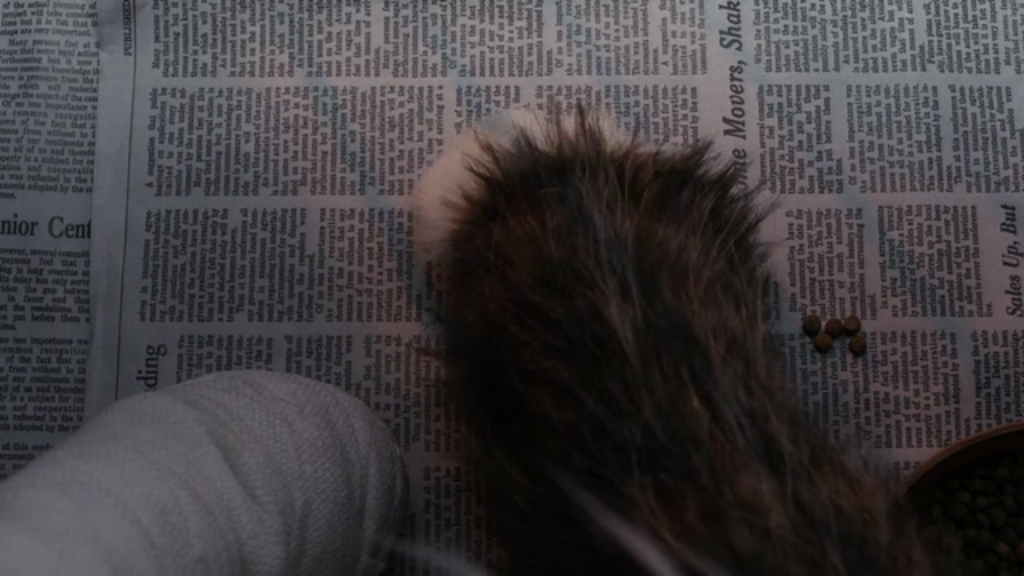
Figure 8. Paw Paw addressing Sophie and Jason
July diverges away from the whimsical and quirky filmmaking that she presents in her earlier films, and instead replicates her own fears about adulthood through irrational disruptions and disturbing imagery within The Future. The artificial world that July interprets throughout the film can be an exploration of dependence on the internet through the lens of human capacity. This disconnection of humans with reality is explored as Jason and Sophie give up using the internet. Here, July may be reflecting contemporary anxieties about the absence of technology, as for many in the Tweny-First Century, it is their reality.
July opens the door for conversation about the human relationship with technology, and wider thought about how humans are disassociated with the environment around them and thus, animals. As the characters never reach the point of caring for Paw Paw, this may infer the melancholic reality that the characters will never achieve a reconciliation with nature.
Bibliography
Anders. C, Miranda July Explains Why You’re Living in a Time Bubble Right Now, Gizmodo, (2011), <https://gizmodo.com/miranda-july-explains-why-youre-living-in-a-time-bubble-5827219>
Balestrini. N, Life Writing in the Internet Age: Miranda July and the Limits of Art as Social Practice, AAA: Arbeiten aus Anglistik und Amerikanistik, 40:½, (2015)
Chrulew. M, Feline Divinanimality: Derrida and the Discourse of Species in Genesis, 18.3, (2011)
Franklin. R, ‘On Film: The Future, By Miranda July’, Salmagundi; Spring 2012; 174-175; ProQuest One Literature,18
Levy. E, Future, The: Interview with Miranda July, (2011) <https://emanuellevy.com/interviews/the-future-interview-with-miranda-july/>
Stanescu. J, ‘Species Trouble: Judith Butler, Mourning, and the Precarious Lives of Animals, Hypatia, 27:3, (2012)
Szarycz. G, ‘The Representation of Animal Actors: Theorising Performance and Performativity in the Animal Kingdom’, Theorising Animals: Re-thinking Humaninal Relations, (2011) pp.156
Figure 1. <https://mirandajuly.com/future-2/>
figure 2. <https://www.nytimes.com/2011/07/29/movies/the-future-directed-by-miranda-july-review.html>
Figure 3. <https://mirandajuly.com/future-2/>
Figure 4. <https://mirandajuly.com/future-2/>
Figure 5. <http://www.altiasi.ro/film/future-de-miranda-july>
Figure 6. <https://mathieulaca.com/jacques-derrida-cat/>
Figure 7. <https://www.asharperfocus.com/Future.html>
Figure 8. <https://aaronbeckum.com/MAKING-THE-FUTURE>